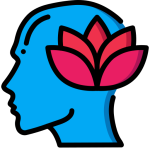
Mindful Bytes: Harnessing the Power of Mindfulness in Computer Science Education
In the fast-paced world of Computer Science education, it's crucial for both teachers and students to find moments of calm and clarity amidst the complexities of algorithms and coding. Mindfulness, the practice of being present and fully engaged in the moment, can be a powerful tool in enhancing teaching and learning experiences. Here’s how incorporating mindfulness practices can benefit you and your students.

1. Reduced Stress and Anxiety
Research has consistently shown that mindfulness can significantly reduce stress and anxiety. For teachers, practising mindfulness can help in managing the pressures of lesson planning and classroom management. Similarly, for students, especially those facing the challenges of GCSEs or A-Levels, mindfulness can alleviate exam-related anxieties.

2. Improved Focus and Concentration
Mindfulness exercises can enhance one’s ability to concentrate and maintain attention. In subjects like Computer Science, where attention to detail is paramount, brief mindfulness practices at the start of a lesson can help students centre their focus, leading to improved engagement and performance.

3. Enhanced Emotional Regulation
Regular mindfulness practice aids in emotional regulation, a vital skill for both educators and learners. It can help teachers maintain a calm and composed classroom environment, and assist students in navigating the emotional ups and downs of their academic journey.

4. Better Classroom Relationships
Mindfulness fosters empathy and understanding, which can improve relationships between teachers and students. A mindful classroom is often a more compassionate and inclusive space, where students feel seen and supported.
Practical Tips for Integrating Mindfulness:

For Teachers:
- Start Your Day Mindfully: Dedicate the first few minutes of your day to a mindfulness exercise, like deep breathing or a short meditation, to set a positive tone.
- Mindful Transitions: Use the moments between classes or tasks for a quick mindfulness break, to reset and recharge.

For Students:
- Mindful Minutes: Begin lessons with a minute of quiet, focused breathing. This can help students transition into learning mode.
- Mindfulness During Breaks: Encourage students to take mindful breaks during long coding sessions or while working on complex problems.

Resources from CSUK:
CSUK offers a range of resources that can be used to support mindfulness practices. For instance, the ‘Do Now’ brain quest worksheets can be repurposed for mindfulness activities, guiding students through reflective questions or calming exercises.
Integrating mindfulness into the Computer Science classroom isn’t just about reducing stress; it’s about creating an environment where both teachers and students can thrive. By embracing these practices, you’ll not only enhance the teaching and learning experience but also foster a more supportive and focused classroom community.
Remember, the journey to mindfulness doesn’t happen overnight. It’s about small, consistent practices that eventually lead to profound changes. So, take a deep breath, and let’s begin.